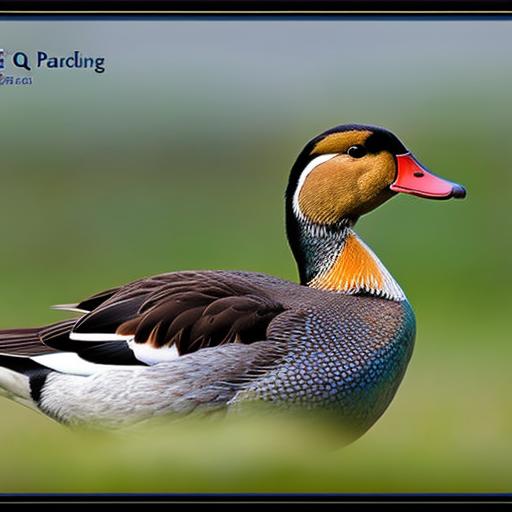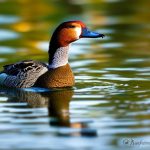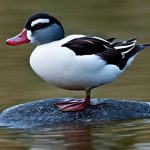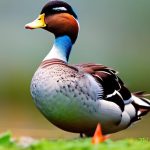Call duck breeding is a fascinating and rewarding hobby that has gained popularity among poultry enthusiasts. These small, adorable ducks are known for their distinctive quack and compact size, making them a favorite among breeders and exhibitors. Understanding the basics of call duck breeding is crucial for anyone looking to start their own breeding program. By selecting the right breeding stock, breeding for specific traits, and managing health and nutrition, breeders can produce high-quality call ducks that meet exhibition standards and excel in various competitions.
Key Takeaways
- Call duck breeding involves understanding the basics of genetics and selecting the right breeding stock.
- Breeding for color and plumage is important in creating desirable call ducks.
- Genetics play a crucial role in determining the traits of call ducks.
- Breeding for size and shape can be achieved through careful selection and breeding practices.
- Creating a breeding program and managing health and nutrition are important for successful call duck breeding.
Understanding the Basics of Call Duck Breeding
Call duck breeding involves the selective mating of ducks to produce offspring with desired traits. Unlike other breeds of ducks, call ducks are bred primarily for their appearance rather than meat or egg production. They come in a variety of colors and patterns, making them a popular choice for exhibition and show purposes.
One key difference between call ducks and other breeds is their small size. Call ducks typically weigh between 1-2 pounds, making them one of the smallest domesticated duck breeds. This compact size makes them ideal for backyard or urban farming.
When breeding call ducks, it is important to focus on specific traits such as color, plumage, size, and shape. Breeders aim to produce offspring that meet the breed standard set by various poultry organizations. By selectively breeding ducks with desirable traits, breeders can improve the overall quality of their flock.
Selecting the Right Breeding Stock for Call Ducks
Selecting the right breeding stock is crucial for successful call duck breeding. When choosing breeding ducks, it is important to look for certain characteristics such as good health, temperament, and conformation to breed standards.
Healthy ducks are more likely to produce healthy offspring. Look for ducks that have bright eyes, clean feathers, and good body condition. Avoid ducks that show signs of illness or have any physical deformities.
Temperament is another important factor to consider when selecting breeding stock. Ducks with a calm and friendly disposition are easier to handle and are more likely to produce offspring with similar temperaments. Aggressive or skittish ducks may pass on these undesirable traits to their offspring.
Finding quality breeding stock can be challenging, but there are several options available. Local poultry shows and exhibitions are a great place to find reputable breeders who specialize in call ducks. Online forums and classified ads can also be a valuable resource for finding quality breeding stock.
Breeding Call Ducks for Color and Plumage
Color genetics play a significant role in call duck breeding. Call ducks come in a wide range of colors and patterns, including solid colors, pied, and mallard patterns. Breeders can selectively breed ducks to produce specific colors and patterns by understanding the basics of color genetics.
To breed for specific colors, it is important to understand the inheritance patterns of different color genes. Some colors are dominant, while others are recessive. By selectively breeding ducks with desired color traits, breeders can increase the likelihood of producing offspring with those traits.
Maintaining proper feather quality is also important when breeding call ducks for color and plumage. Ducks with healthy feathers will have vibrant colors and patterns. Providing a balanced diet, regular grooming, and proper housing conditions can help maintain feather quality in breeding stock.
The Importance of Genetics in Call Duck Breeding
Genetics play a crucial role in call duck breeding. Understanding the basics of genetics can help breeders make informed decisions when selecting breeding stock and planning matings.
By understanding the principles of inheritance, breeders can predict the likelihood of certain traits appearing in offspring. This knowledge allows breeders to selectively mate ducks that carry desirable traits, increasing the chances of producing offspring with those traits.
It is important to avoid inbreeding when breeding call ducks. Inbreeding can lead to a higher risk of genetic disorders and reduced fertility. To maintain genetic diversity and improve the overall health of the flock, breeders should introduce new bloodlines periodically.
Breeding Call Ducks for Size and Shape
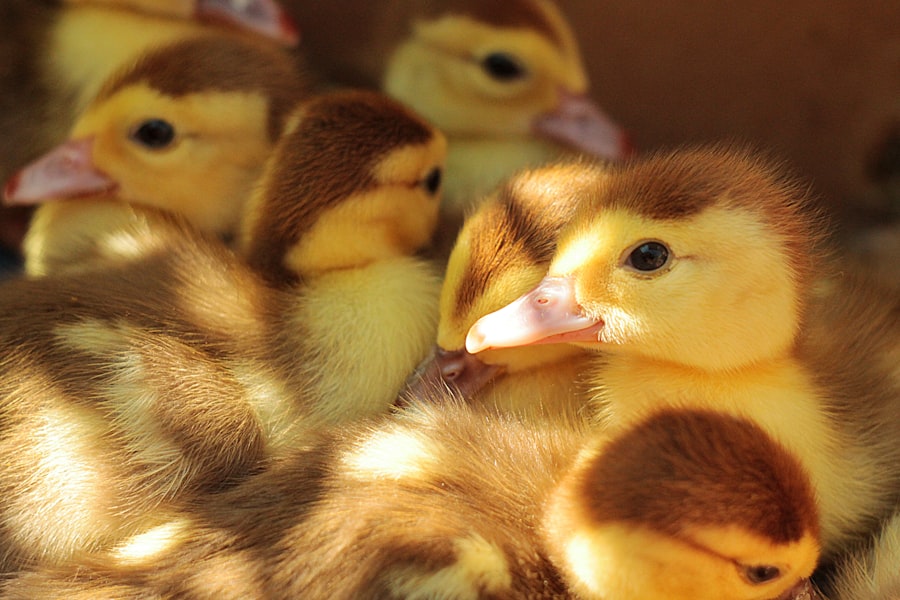
Size and shape standards are important considerations when breeding call ducks. The American Poultry Association (APA) has set specific standards for call ducks, including weight, body shape, and overall conformation.
To breed for proper size and shape, breeders should select ducks that closely match the breed standard. Ducks that are too large or too small may not meet exhibition standards. It is important to maintain proper body condition in breeding stock by providing a balanced diet and regular exercise.
Creating a Breeding Program for Call Ducks
Having a breeding program is essential for successful call duck breeding. A breeding program helps breeders keep track of their breeding stock, plan matings, and monitor the progress of their flock.
To create a breeding program, breeders should start by selecting their foundation stock. These ducks will serve as the basis for future generations. It is important to keep detailed records of each duck’s pedigree, traits, and breeding history.
Breeders should also have a clear breeding plan in place. This includes setting goals for the desired traits they want to improve or maintain in their flock. By carefully selecting breeding pairs and tracking the outcomes of each mating, breeders can make informed decisions to achieve their breeding goals.
Breeding Call Ducks for Exhibition and Show
Breeding call ducks for exhibition and show requires careful attention to detail. The APA has set specific standards for exhibition call ducks, including color, plumage, size, shape, and overall appearance.
To breed for exhibition and show, breeders should select ducks that closely match the breed standard. This includes selecting ducks with correct color patterns, proper feather quality, and ideal size and shape. Regular grooming and presentation are also important to showcase the ducks’ best features.
Managing Health and Nutrition in Call Duck Breeding
Proper nutrition and health care are essential for successful call duck breeding. Ducks that are well-nourished and free from disease are more likely to produce healthy offspring.
A balanced diet is crucial for the overall health and well-being of call ducks. Ducks should be provided with a high-quality commercial feed that meets their nutritional needs. Supplementing their diet with fresh fruits, vegetables, and clean water is also important.
Regular health checks and vaccinations can help prevent the spread of diseases and ensure the overall health of the flock. It is important to work closely with a veterinarian who specializes in poultry to develop a comprehensive health care plan for the breeding stock.
Breeding Call Ducks for Egg Production
While call ducks are not typically bred for egg production, some breeders may be interested in improving the egg-laying capabilities of their flock. To breed for egg production, breeders should select ducks that come from lines known for their high egg production.
Providing a balanced diet, proper housing, and regular exercise can also help improve egg production in call ducks. It is important to monitor the health and condition of the ducks to ensure they are in optimal breeding condition.
Understanding the Challenges of Call Duck Breeding
Breeding call ducks comes with its own set of challenges. It can be difficult to find quality breeding stock that meets breed standards. Breeding for specific traits, such as color or size, can take several generations to achieve. Additionally, maintaining the health and well-being of the flock requires constant attention and care.
To overcome these challenges, breeders must be patient and persistent. It takes time and dedication to build a successful breeding program. Networking with other breeders, attending poultry shows, and continuously learning about call duck breeding can help overcome these challenges.
Call duck breeding is a rewarding hobby that requires a deep understanding of genetics, breeding techniques, and proper care. By selecting the right breeding stock, breeding for specific traits, and managing health and nutrition, breeders can produce high-quality call ducks that meet exhibition standards and excel in various competitions. With perseverance and patience, anyone can pursue call duck breeding with confidence and enjoy the beauty and charm of these delightful birds.
If you’re interested in duck breeding, you may also want to check out this informative article on poultrywizard.com about the best kind of coop for chickens. Understanding the different types of coops available can help you create a suitable and comfortable environment for your ducks as well. To learn more, click here.
FAQs
What are call ducks?
Call ducks are a breed of domesticated duck that are smaller in size compared to other duck breeds. They are known for their distinctive high-pitched calls and are commonly kept as pets or for exhibition purposes.
What is call duck breeding?
Call duck breeding is the process of selectively breeding call ducks to produce offspring with desirable traits such as size, color, and feather quality. This is done through careful selection of breeding pairs and monitoring of the offspring.
What are some common traits that breeders look for in call ducks?
Some common traits that breeders look for in call ducks include size, color, feather quality, and overall health and temperament. Breeders may also select for specific traits depending on the intended use of the ducks, such as exhibition or egg production.
What is the breeding process for call ducks?
The breeding process for call ducks involves selecting a breeding pair based on desire
Meet Walter, the feathered-friend fanatic of Florida! Nestled in the sunshine state, Walter struts through life with his feathered companions, clucking his way to happiness. With a coop that’s fancier than a five-star hotel, he’s the Don Juan of the chicken world. When he’s not teaching his hens to do the cha-cha, you’ll find him in a heated debate with his prized rooster, Sir Clucks-a-Lot. Walter’s poultry passion is no yolk; he’s the sunny-side-up guy you never knew you needed in your flock of friends!

